A set of 4 posters highlighting the different types of clouds.
Use these posters to assist your students in identifying the different names and features of clouds.
Information on the posters includes:
Cumulus Clouds
- Cumulus clouds are puffy and look like cotton wool balls. They are flat on the bottom.
- They are low-level clouds and usually occur in fair weather, although they may lead to storms.
- Cumulus clouds form when large bubbles of warm air rise rapidly. The word cumulus means ‘hump’.
Stratus Clouds
- Stratus clouds are grey in colour and look like blankets in the sky.
- They are low-level clouds and are essentially above-ground fog.
- Stratus clouds form when a mass of warm air is pushed up over a mass of cooler air or a mountain. On clear days, when the earth cools quickly, a stratus cloud or fog forms closer to the ground. The word stratus means ‘layer’.
Cirrus Clouds
- Cirrus clouds are thin and wispy and look like stretched cotton. You can see through them.
- They are high-level clouds that are made of ice crystals.
- Cirrus clouds usually mean nice weather, however, they can occur just before a change of weather.
- When the ends of cirrus clouds are curled, this is a sign that the wind is going to change directions. The word cirrus means ‘curl of hair’.
Nimbus Clouds
- Nimbus clouds are darker than other clouds and often mean a thunderstorm is brewing.
- The word ‘nimbus’ means a cloud that already has rain or snow falling. Nimbus is often added to other cloud names.
- Nimbostratus is also used, which means a stratus cloud with rain.
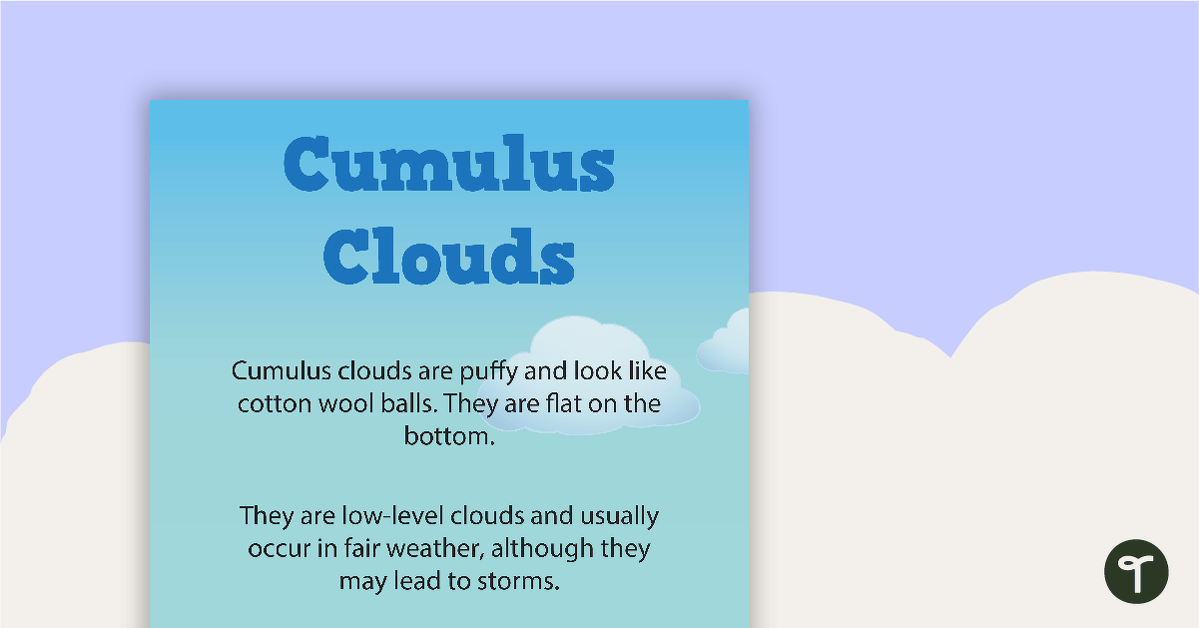


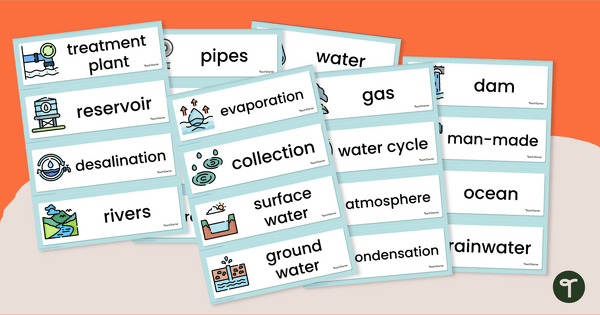
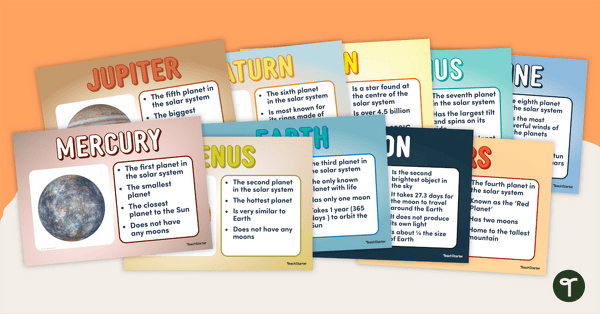
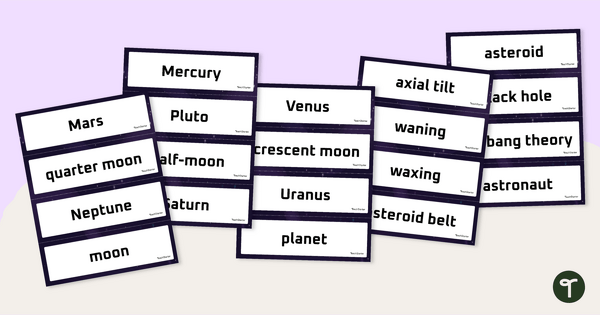


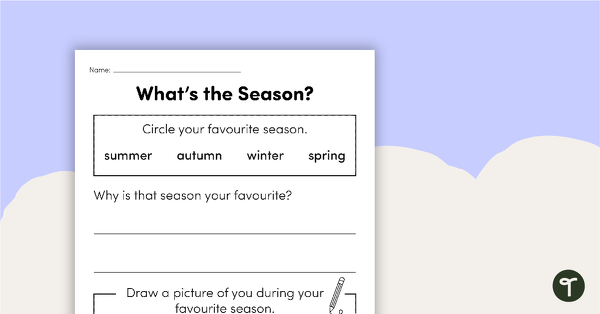
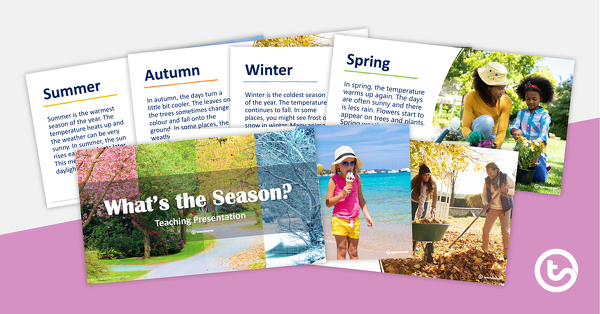
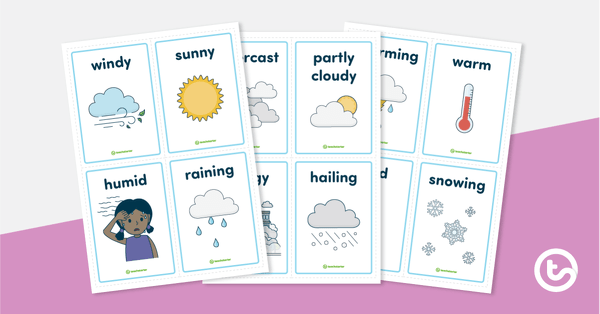
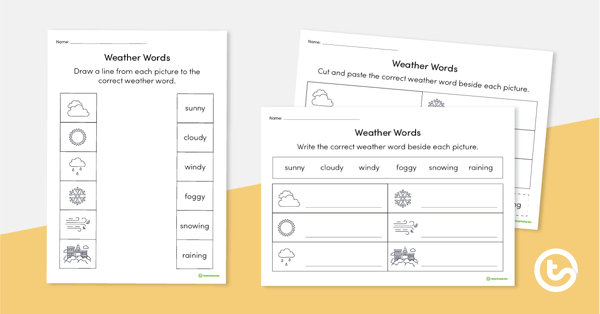
0 Comments
Write a review to help other teachers and parents like yourself. If you'd like to request a change to this resource, or report an error, select the corresponding tab above.